Main Content
Electronic literature is Comparative Literature. It is born digital; it operates across multiple machine and human languages, and requires translation of these languages before it even reaches the human reader. It is procedural and computational and is processed across multiple platforms, protocols, and technologies in real-time, in accordance with the very real constraints and technical specificities of the hardware, software, and network configuration of the reader’s computer. What is presented onscreen – the artwork and poetic – is multimedia and multimodal. Combining text, image, sound, movement, interactivity, and design, such works challenge traditional disciplinary boundaries (is a Flash animation a film, literature, a hybrid or something else entirely?) as well as genre categories (is it narrative, poetry, or performance?). For these reasons and more, electronic literature requires its reader to read and think comparatively.
Electronic literature demands that readers compare not only language and text but also the media formats and ecologies that support them. Digital literature operates in medial contexts and networked configurations that expose the inextricability of the technological from the linguistic and cultural (as well as political, protological, and historical dimensions). As a result, electronic literature exposes that there is never text without media and mediation. Accepting this fact, we are compelled to recognize that literary studies is, at least in part, media studies. In my scholarly work, I have tried to show the benefits of approaching electronic literature comparatively, comparing it to earlier literary traditions (especially modernism, in my book Digital Modernism) and to other textual media platforms. In this essay I suggest that reading electronic literature can support a paradigmatic shift within the discipline of Comparative Literature: a medial turn.
Electronic Literature
In the last few decades, electronic literature has emerged as a robust field across diverse genres, languages, readerships, and nations. Such work invites comparative reading practices that combine analysis of languages and different media forms. Let’s take a look at a few examples of how digital works present onscreen poetics that promote comparative literary reading approaches.
First and foremost, Young-hae Chang Heavy Industries: the digital artists (one American, one Korean) challenge simple designations of nationality, genre, and language. In Nippon and other works, Young-hae Chang Heavy Industries present a choreographed conversation between Western and Eastern languages that flashes upon a horizontally divided screen. The visual design invites translation and comparison but the speed at which the languages flash dispels any comprehensive conclusion [Figure 1].
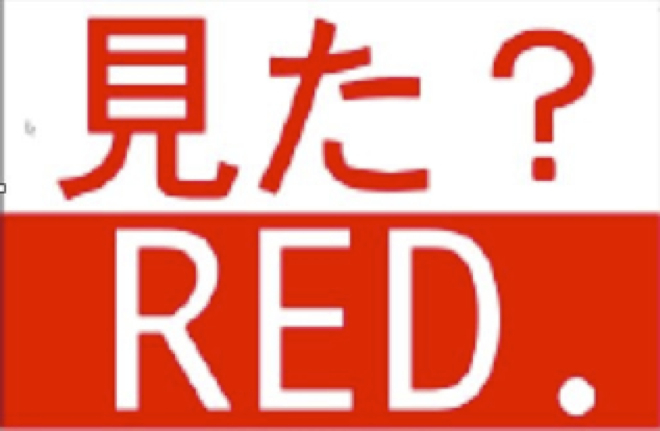
Figure 1: Screenshot from Young-hae Chang Heavy Industries, Nippon (2002)
As a result, the work promotes awareness of how media inform comparative reading practices, ambitions, and expectations.[1] William Poundstone similarly uses Flash to present a flashing one-word-at-a-time aesthetic that demands comparative literary analysis. In “Project for the Tachistoscope {Bottomless Pit},” text and icons are embedded together as image-texts; the visual and linguistic are inseparable and interdependent [Figure 2].
.jpg)
.jpg)
Figure 2: Non-consecutive screenshots from William Poundstone, “Project for the Tachistoscope {Bottomless Pit}” (2005)
These techniques foreground that digital literature is not just about narrative or poetry – indeed, it’s not just about text – but is also about interface and interactive design.
Other works of electronic literature promote comparative linguistic analysis by presenting different versions of the same work in different languages. David Jhave Johnston’s “Sooth” (2005) prompts readers to choose the language in which to read the work and thereby invites comparison between these different language-based editions [Figure 3].

Figure 3: Screenshot from David Jhave Johnston, “Sooth” (2005)
Young-hae Chang Heavy Industries do this as well, in works that do not present a split-screen performance of dueling languages, offering the same work in multiple languages on its website (ychang.com). In addition to promoting translation across languages, electronic literature also invites comparison between human and machinic languages. An early genre of electronic literature called “codework” places linguistic language and programming code side-by-side or even interspersed into readable text and poetic neologisms that Katherine Hayles calls “creole” (Hayles, "Print Is Flat" 80) [Figure 4].
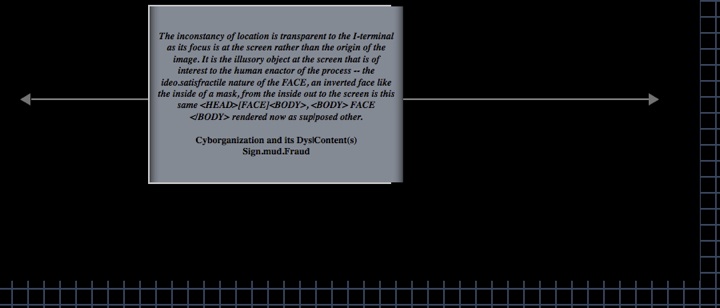
Figure 4: An example of codework, an excerpt of a screenshot from Talan Memmott’s Lexia to Perplexia (2000)
Codework, like Talan Memmott’s Lexia to Perplexia or works by Mez, defamiliarizes language and compels recognition that code is a type of language that can be read.
Electronic literature not only invites comparison between languages; it also presents opportunities to compare how meaning is presented across multiple medial and sensorial modes. Erik Loyer’s Chroma (2001), for example, presents its reader with two ways of engaging the science-fiction narrative: viewing the novel as a visual animation with voice-over narrative in “Perform Text” or as scrollable text in “View Text.” [Figure 5]
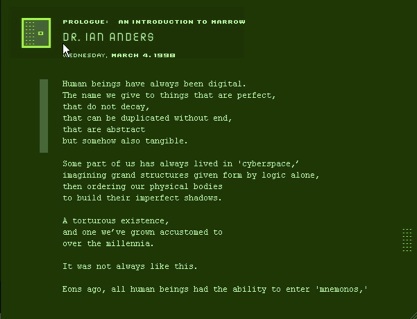
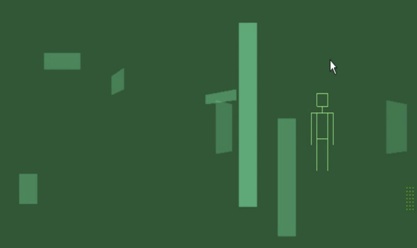
Figure 5: Screenshot from “View Text” and “Perform Text” of ‘Prologue” in Erik Loyer’s Chroma (2001)
The reader must choose between the modes and cannot open both options at once. The choice thus compels reflection on the choices that go into the very process of comparing.[2] In “Why Compare?,” R. Radhakrishnan argues that comparison always involves choices; and those choices, even (indeed, particularly) those choices made unintentionally, have implications for the resulting comparison. He writes, “comparisons are never neutral: they are inevitably tendentious, didactic, competitive, and prescriptive. Behind the seeming generosity of comparison, there always lurks the aggression of a thesis” (454). Loyer’s Chroma illustrates this point. Choosing “View Text” instead of “Perform Text” suggests an implicit argument about how to read a novel: one reads by viewing text. But, “View Text” is not the default mode of experiencing Chroma. “Perform Text” is the programmed mode of advancing through the novel’s chapters, and this detail is significant for understanding the comparative literary work that Chroma performs and promotes. The work illuminates the different possible modes for “reading” and the different semiotic elements available to be read, analyzed, and compared.
The field of electronic literature is full of artists exploring the actions, intentions, and purposes of comparative reading. In response to their works, and indeed in response to the evolution of electronic literature more generally, literary critics have developed a diverse set of critical approaches for analysis. There are many ways to read electronic literature comparatively, critically, and closely. From critically examining the programming languages that produce a literary work onscreen (as in Critical Code Studies) and comparing the various technologies involved in producing the configuration of the digital processural performance (as in Platform Studies and media archaeology), to using data analytics software to identify patterns in a single text across a data set of images, texts, and screenshots taken from it (as in Cultural Analytics), scholars are finding new ways to pursue comparativist paradigms with and through digital literature.[3]
We are also witnessing an effort to pursue a reflective strain of critical questioning about what the scholarly discipline of comparative literature has to do with, for, and about electronic literature. John Zuern puts forth a comparative reading of the disciplines of Comparative Literature and Media Studies and finds that they have much to offer each other. He cautions critics of new media, and of electronic literature in particular, to avoid the pitfall of scholarly specialization, a myopic obsession with media-specificity that might disable comparative studies. He writes, “a preoccupation with media specificity threatens to override our attention to aspects of digital texts that are analogous, if not simply identical, to aspects of print documents, and thus to thwart critical and pedagogical projects that trace comparisons across differently formatted texts” (Zuern). Reading digital literature, he argues, should be comparative in nature, both in terms of comparing media formats and in comparing literary poetics. We do not want to lose the focus on text and textual poetics that makes electronic art, like Nippon or Chroma, electronic literature. Zuern continues, “Special pleading for the digital impedes our access to each artwork’s ‘literary singularity,’ a quality that in Derek Attridge’s terms ‘may be said to derive from—though it is much more than—the verbal particularity of the work: specific words in a specific arrangement’” (ibid.). Zuern’s point about the importance of maintaining a focus on the literary in analyzing electronic literature (and not losing that aspect in the effort to examine the media) has an important reverse implication: traditional comparative literary readings should also avoid the myopia of focusing solely on text and language.
Rebecca Walkowitz makes this point in her efforts to push Comparative Literature to engage with media studies. Walkowitz introduces the term “comparison literature” to describe literature that “experiments with comparative structures” and therefore demands comparative reading of its content and medial format. Walkowitz introduces the term in a discussion of a printed text, J.M. Coetzee’s Diary of a Bad Year, but the essay is part of her larger argument (spread out across several publications) that in a globally-networked world where the concept of “world literature” does substantial work, critics need to read comparatively across texts, translations, and media platforms, even while reading a single literary work ("Comparison Literature" 567).[4] In a different essay, she pursues this claim using Young-hae Chang Heavy Industries as her case study. She claims that digitally created literature is “born-translated” because such works “not only appear in translation but are written for translation from the start” ("Close Reading" 172). Such literature, Walkowitz argues, is reflexively engaged with the network of production and distribution that enables its global poetic, and awareness of this fact requires the reader to be attentive to the influence of translation in the network and, thus, on the literature.
“Comparison literature” might be considered a version of what Katherine Hayles earlier called a “technotext,” a work that reflexively draws attention to its materiality and technologies of meaning-making (Writing Machines 25). However, Walkowitz’s term differs from Hayles in its purpose and intervention. Instead of describing a literary practice or poetic effect, one harbored in or expressed by a literary work, the term “comparison literature” intervenes in disciplinary discourse about Comparative Literature and literary studies more broadly. Comparison literature, Walkowitz writes, “asks us to imagine new geographies of literary production and requires methodologies that understand the history of a book to include its many editions and translations” ("Comparison Literature" 568): Comparative literature meets media studies. Yet, while Walkowitz’s formulation of “comparison literature” attempts to support a critical shift from focusing on text to considering materiality, it still locates that material textuality in the print-based realm: the history of the book. Here is where a focus on electronic literature can support a disciplinary paradigm shift. What the works of Young-hae Chang Heavy Industries (Walkowitz’s own example) and other digital writers actually show is that electronic literature pushes comparative analysis to move from text to process, from translation to series of translation acts, from work to network.
Certain genres of web-based electronic literature depend upon the Internet’s technological structure for their literary effects; they use algorithms to cull data from social networking sites and use that content to constitute the “literary” product. For example, consider the data-mined streaming poetry of “Twistori” or the Twitter-based Netprov piece “Occupy MLA”[5] [Figures 6-7].

Figure 6: Screenshot from Amy Hoy and Thomas Fusch’s “Twistori” (taken May 5, 2014)
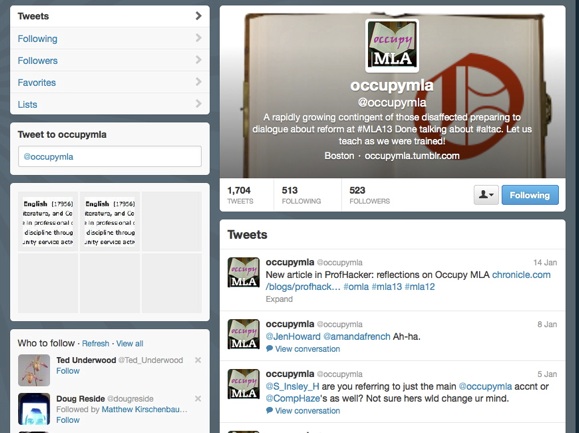
Figure 7: Screenshot from Mark C. Marino and Rob Wittig’s “Occupy MLA” (2013)
For these works, being “comparison literature” and global literature has little to do with the history of the book and much to do with the history of the Internet. Reading such net-based artworks as literature presents new challenges for critics to consider and compare.
Rita Raley explores the challenges of a particular new, networked literature: text-based, site-specific performances or public installations that include SMS messages from reader/participants. Examining this type of text-as-networked-performance, Raley explains, “What was at stake was less the physical parts of the work than a negotiation of control over property, technological systems, and public speech” ("TXTual Practice" 6).[6] The location and properties of this particular type of digital literary text brings to light new questions and concerns for critics. Raley’s example of SMS public performances shows an instance of electronic literature that “allows us to think across media, platforms, and genres and to articulate a discourse on textual practices that are sited, social, and live” ("TXTual Practice" 8). Digital literature of this sort (and, indeed, of all sorts) promotes reconsideration and reshaping of what and how comparatists compare.
We can no longer just compare texts. We must now compare textual media.
Comparative Textual Media
Comparing media in the service of literary criticism can be transformative, both for understanding literature and also for reconsidering the disciplinary fields and practices devoted to it. Katherine Hayles and I make this argument in Comparative Textual Media: Transforming the Humanities in a Postprint Era. As the title implies, the collection proposes a paradigm shift for renovating the humanities in a digital age by focusing on how text is media. The particular perspective we present is comparative media studies. We write:
[P]rint is itself a medium, an obvious fact that tends to be obscured by its long dominance within Western culture. As the era of print is passing, it is possible once again to see print in a comparative context with other textual media, including the scroll, the manuscript codex, the early print codex, the variations of book forms produced by changes from letterpress to offset to digital publishing machines, and born- digital forms such as electronic literature and computer games. (vii)
The book collects essays from scholars examining literature in different textual media forms (from ancient Greek scrolls to digital literature, medieval manuscripts to paper letterhead and video games) in order to present a collective argument that reading across and between different textual formats exposes how text is always dependent upon the particularities of media. Recognizing this fact compels scholars of literature and textuality to reframe what we do and how we do it: to identify how a focus on media opens interdisciplinary channels for communication, collaboration, and, yes, comparison.
Comparative media studies has obvious relevance in our digital moment. When pundits are claiming the death of books (the media form associated with literature) and questioning the relevance of the Humanities, a comparative perspective can put things in context. Indeed, a comparative media perspective has been part of modern literary criticism from the early decades of the twentieth century. Back in 1924, I.A. Richards introduced literary criticism as comparative media studies. He introduces the book that (it could be argued) laid the foundation for the discipline of literary criticism, Principles of Literary Criticism, by laying out “the questions which the critic seeks to answer,” such as “What gives the experience of reading a certain poem its value? How is this experience better than another? Why prefer this picture to that?” and so on (2). He then concludes his set of sample questions by stating, “These are the fundamental questions which criticism is required to answer, together with such preliminary questions--What is a picture, a poem, a piece of music? How can experiences be compared?” (ibid.; original emphasis). In this context, literary criticism has always practiced comparative media studies. But in the age of digital media and networks, comparative literary critics must puruse comparison across genres, artforms, and medial platforms—not just languages and nationalities-- in order to understand specific art objects and also the paradigms, practices, and ideologies involved in such study.
As Hayles and I argue in the introduction to Comparative Textual Media, “A focus on media promotes awareness that national, linguistic, and genre categories (typical classifications for text-based disciplines) are always already embedded in particular material and technological practices with broad cultural and social implications” (x). This is particularly true in the age of new media and networked culture, because text that circulates online is inseparable from its distributed medial instantiation. Electronic literature supports such metacritical awareness, for it challenges us to identify what constitutes the literary “text,” let alone how to analyze it. Since electronic literature is procedural, critics can (and should) focus not only on onscreen poetics but also on the networked practices of production, circulation, and archiving of these products.
Digital literature promotes a shift from focusing on objects (a work, a text, a narrative ) to focusing on processes, institutions, protocols, and relationships. How can onscreen poetics be separated from programming codes or the specificities of software versions and hardware configurations? How can we consider national, linguistic, and genre questions without considering how corporate and technological factors enable (or disable) literary aesthetics? When reading electronic literature, especially a work created in Flash and presented on an Apple product that blocks Adobe software, we cannot take for granted that the answers to such questions are purely aesthetic and literary. Analysis of literature in the digital age, and certainly analysis of digital literature, must necessarily include examination not only of specific delivery technologies but also of institutional and infrastructural technologies.
Comparative literary critics are trained to read across and between, to seek out and explore the connections that configure meaning. These skills are ever more important in our networked age. We need to harness the power of comparative approaches to examine the specificities of medial ecologies—the technological configurations, governmental policies, programming protocols, corporate confederations, and cultural norms—that support the production and dissemination of literary texts. We just have to learn to shift our comparative gaze. A focus on electronic literature supports that perspectival and paradigmatic shift. Digital literature is comparison literature that compels Comparative Literature to reconsider what counts as comparison and translation-- indeed, what counts as literature and literary criticism in a digital age.
Works Cited
Hayles, N. Katherine “Print is Flat, Code is Deep: The Importance of Media-Specific Analysis.” Poetics Today 25 (2004): 67-90. Print.
---. Writing Machines. Cambridge, MA: MIT Press, 2002. Print.
--- and Jessica Pressman “Making, Critique: A Media Framework.” Comparative Textual Media: Transforming the Humanities in the Postprint Era. Eds. N. Katherine Hayles and Jessica Pressman. Minneapolis: U of Minnesota P, 2013. Print.
Hoy, Amy and Thomas Fuchs, “Twistori” (2008) http://twistori.com/. Web. Accessed June 10, 2014.
Marino, Mark C. “Critical Code Studies.” Electronic Book Review. http://www.electronicbookreview.com/thread/electropoetics/codology. Web. Accessed June 10, 2014.
--- and Rob Wittig, “Occupy MLA.” (2011-2013) https://twitter.com/occupymla. Web. Accessed June 10, 2014.
Pressman, Jessica. “Reading the Code Between the Words.” Dichtung-Digital. no. 37 (2007). Online at http://www.dichtung-digital.com. Web. Accessed June 10, 2014.
---. Digital Modernism: Making it New in New Media. New York: Oxford UP, 2014. Print.
Radhakrishnan, R. “Why Compare?” New Literary History 40 (2009): 453-471 Print.
Raley, Rita. ““TXTual Practice.” Comparative Textual Media: Transforming the Humanities in the Postprint Era. Eds. N. Katherine Hayles and Jessica Pressman. Minneapolis: Minnesota UP, 2013. 5-32.
Richards, I. A. Principles of Literary Criticism. New York: Routledge, 2001. [1924]. Print.
Walkowitz, Rebecca. “Close Reading in the Age of Global Writing.” Modern Language Quarterly 74 ( 2013): 171-195. Print.
---. “Comparison Literature.” New Literary History 40 (2009): 567-582. Print.
Zuern, John. “Figures in the Interface: Comparative Methods in the Study of Digital Literature.” Dichtung-Digital. http://www.dichtung-digital.de/2009/Zuern/index.htm. Web. Accessed June 10, 2014.
[1] For more on Nippon, see Pressman, “Reading the Code Between the Words.”
[2] For more analysis of Chroma’s View Text and Perform Text, see Chapter 5 of Pressman’s Digital Modernism.
[3] On Critical Code Studies, see Mark C. Marino’s “Critical Code Studies;” on Platform Studies, see http://platformstudies.com/; on Cultural Analytics, see Lev Manovich’s description at http://lab.softwarestudies.com/p/cultural-analytics.html.
[4] Walkowitz describes Coetzee’s novel as comparison literature: “It fits this rubric because of its circulation, to be sure, but also because of its production: “formally, the text experiments with comparative structures such as lists and catalogues; typographically, it invokes historical practices of translation that emphasize comparison between source and target; and thematically, it reflects on gestures of ethical, national, and generic comparison” (567).
[5] “Occupy MLA” was a Netprov performance that played out over Twitter at the Modern Language Conference in 2013 and 2014. It was created by Mark C. Marino and Rob Wittig and is archived at http://markcmarino.com/omla/ and http://markcmarino.com/wordpress/?page_id=117.
“Twistori,” an experiment by Amy Hoy and Thomas Fuchs is available at http://twistori.com/
[6] The “public art installations” that Raley addresses “are interactive (remote and on-site participants are invited to contribute an SMS message of their own to the data feed); sited (they cannot but engage the specificities of each place and, by extension, prompt a consideration of what is “public” and what is “private”); and social (participants are continually negotiating their relationship to the audience, crowd, and readerly communities that are themselves continually mutating)” (6).
